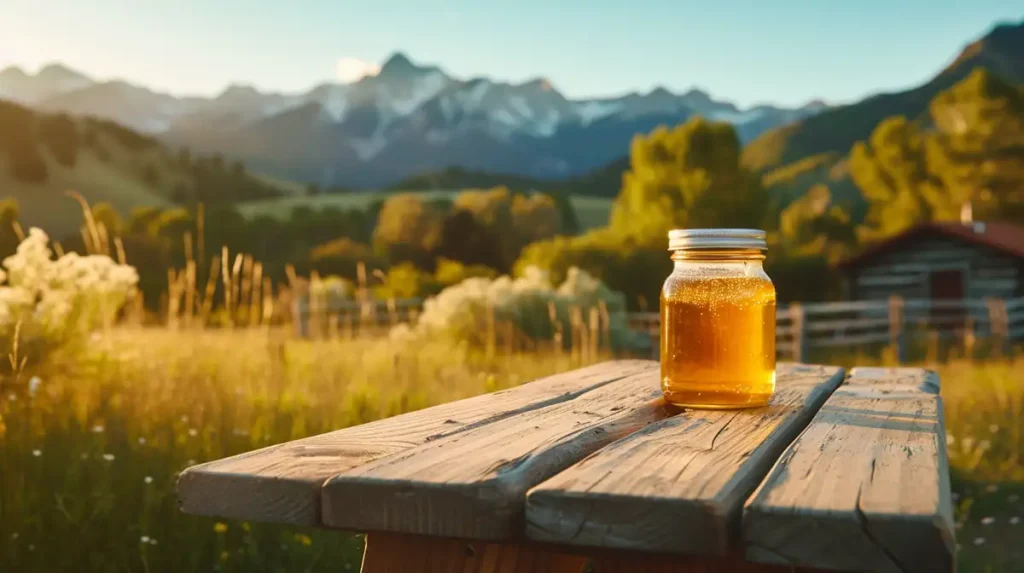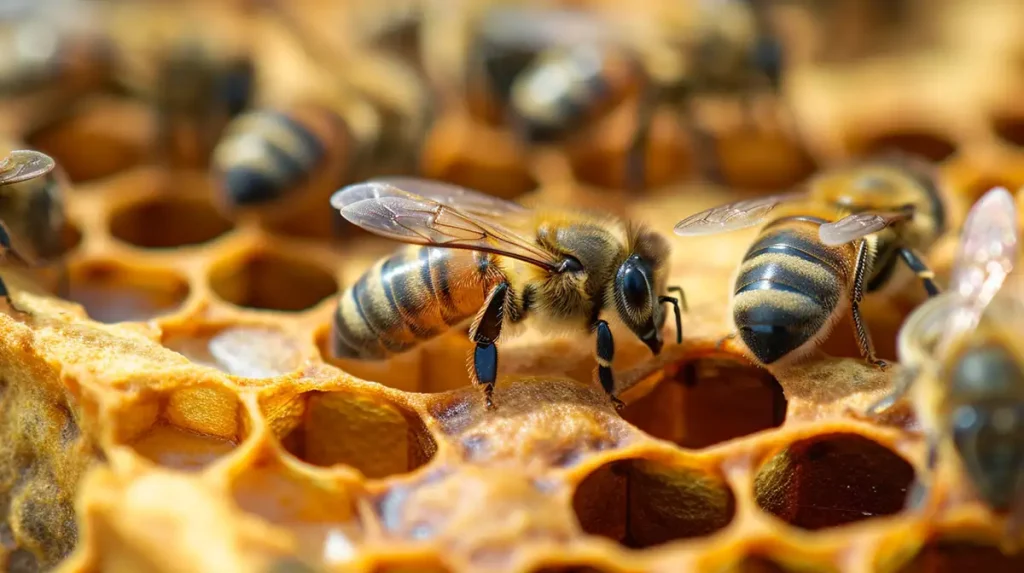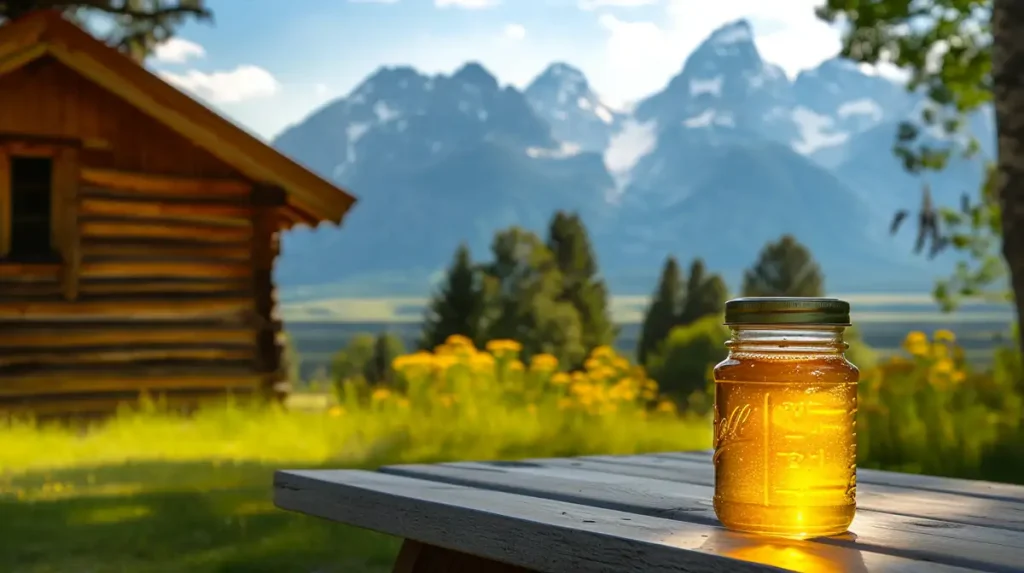Table of Contents
On average, a single beehive can produce about 25 to 50 pounds of honey annually. Nevertheless, this amount can vary greatly depending on various factors such as the location of the hive, weather conditions, nectar source availability, and the health and size of the bee colony. In ideal conditions, some hives may produce up to 100 pounds or more of honey in a year. The productivity of a hive is closely linked to the foraging range and efficiency of its worker bees, as well as the availability of flowering plants from which bees collect nectar.
In the below paragraphs, we will take a more detailed look at this topic.
Beekeeping is a wonderful hobby for people fascinated by honey bees. A lot of us who do it can cite any number of reasons explaining why. Among them is the ability to harvest honey. To a new beekeeper honey might even be viewed as the number one payoff. So how much honey does one hive produce?
Honey volume is variable based on conditions. Besides that, ask twenty different beekeepers and you are likely to get twenty different answers. One commercial beekeeper based in California states on their website that a single hive in the U.S. can produce between 10 and 200 pounds of honey annually. Meanwhile, the British Beekeepers Association says 60 pounds is the max. They say that 25 pounds is average for British hives.
Why such a difference? Because honey production is affected by many things:
- Colony size and health
- Hive location
- Available plant life
- Climate and seasonal conditions
- Competition and predation
- Parasites and disease.
As a beekeeper, trying to estimate how much honey one hive will produce is less important than doing your best to maintain conditions that encourage maximum production. Focus on the quality of life your bees enjoy and they will take care of the honey.
What Is The Average Honey Production Per Beehive?
Before getting into the average honey production per beehive, it is essential to recognize that various factors can influence the amount of honey a beehive produces. These factors include among others the bee species, hive management practices, local flora, weather conditions, and the overall health of the colony.
Factors Affecting Honey Production
Bee Species
Different bee species can produce varying amounts of honey. The most common honey-producing species is the European honey bee (Apis mellifera), which is known for its efficient foraging and honey-making abilities.
Hive Management Practices
Beekeepers play a crucial role in managing their hives to maximize honey production. This includes providing adequate space, ensuring the queen is healthy, and managing pests and diseases that could affect the colony’s productivity.
Local Flora
The availability of nectar-producing plants in the area is another key factor that determines honey production. The type, variety, and abundance of flowers in the region will affect the bees’ foraging opportunities and, consequently, the amount of honey they can produce.
Weather Conditions
Weather conditions significantly impact honey production. Ideal conditions include warm temperatures, low humidity, and minimal rainfall. Adverse weather can limit the bees’ ability to forage, thereby reducing the honey yield.
Colony Health
A healthy and strong colony is essential for high honey production. A beekeeper must monitor the hive for signs of disease or parasites, such as Varroa mites, which can weaken the colony and lower honey output.
- Carter, Anthony (Author)
- English (Publication Language)
- 194 Pages - 02/28/2024 (Publication Date) - Independently published (Publisher)
Average Honey Production
Taking all these factors into consideration, the average honey production per beehive can vary greatly. In general, a healthy and well-managed hive can produce anywhere from 30 to 100 pounds (14 to 45 kilograms) of honey per year. However, it is important to note that this is just an average, and actual yields can differ significantly based on the factors mentioned above.

How Does The Number Of Bees In A Hive Impact Honey Production?
The number of bees in a hive plays a crucial role in honey production. In general, a larger population of bees in a hive will lead to increased honey output. This is primarily because a higher number of worker bees are available to forage for nectar, which is the primary ingredient for honey. In this section, I will examine the relationship between the number of bees in a hive and honey production.
Foraging Capacity
The foraging capacity of a hive is determined by the number of worker bees available to collect nectar from flowers. The more worker bees present in a hive, the more nectar can be collected and converted into honey. Additionally, a large bee population allows for a wider foraging range, increasing the likelihood of finding nectar-rich flowers. It is important to note that foraging capacity is also influenced by factors such as the availability of flowers, weather conditions, and the overall health of the colony.
Brood Rearing and Colony Growth
The number of bees in a hive is also essential for brood rearing and colony growth. The queen bee is responsible for laying eggs while worker bees take care of feeding and nurturing the larvae. A larger population means that there are more worker bees available to tend to the developing larvae, ensuring a strong and healthy colony. A thriving colony will have a higher number of foragers, which in turn contributes to increased honey production.
Efficient Use of Resources
A larger bee population in a hive allows for more efficient use of resources. For example, a higher number of bees can maintain the optimal temperature within the hive more effectively. This is important as temperature regulation is essential for brood rearing, honey production, and overall colony health. Moreover, a larger workforce can allocate more bees to defend the hive from predators and intruders, safeguarding the honey stores.
Nevertheless, it’s important to strike a balance when it comes to bee population. Overcrowding in a hive can lead to issues like swarming, where a portion of the colony leaves with the old queen to establish a new hive. This can lead to a significant drop in honey production as the remaining colony must re-establish itself and raise a new queen.
What Factors Influence The Amount Of Honey Produced By A Hive?
Honey production in a hive is, as mentioned a couple of times already, determined by various factors ranging from the environment and weather to the health and size of the colony. Understanding these factors can help ensure a bountiful honey harvest and a thriving bee population.
Forage Availability and Quality
A key factor in honey production is the availability of quality forage resources. Bees rely on flowers to collect nectar, which they then convert into honey. The more abundant and diverse the floral sources, the greater the potential for honey production. Seasonal variations, local flora, and land use changes can all influence the forage available to bees.
Weather Conditions
Weather plays a crucial role in the amount of honey a hive can produce. Favorable conditions, such as warm temperatures and minimal rain, promote foraging activity and nectar flow. On the other hand, excessive rain, high winds, or extreme temperatures can limit the bees’ ability to forage, thereby reducing honey production.
Colony Health and Strength
A healthy and robust colony is more likely to produce a significant amount of honey. Regular inspections for pests, diseases, and signs of stress can help maintain colony health. A well-mated and productive queen is also essential for a thriving colony. Moreover, providing ample space within the hive can prevent overcrowding and encourage honey storage.
Beekeeping Management Practices
The methods employed by beekeepers can directly impact honey production. Good management practices include ensuring the bees have access to clean water, supplemental feeding during times of scarcity, and properly timed hive inspections. Additionally, the choice of hive type and its placement can have a significant impact on honey production. For example, placing hives in an area with high forage potential and avoiding locations with excessive shade or wind can lead to better results.
Genetic Factors
The genetic makeup of a bee colony can also influence its honey production capabilities. Some bee strains, such as the Italian honey bee (Apis mellifera ligustica), are known for their exceptional foraging and honey production abilities. Beekeepers may choose to selectively breed or obtain queens from reputable breeders to enhance the productivity of their colonies.

How Much Honey Can Be Harvested From A Single Hive Without Harming The Bees?
To ensure the wellbeing of the bees while still being able to harvest honey, it’s essential to understand that the amount of honey that can be harvested depends on a few factors. These factors include the size and strength of the colony, the local climate and weather conditions, and the availability of forage.
Size and Strength of the Colony
Larger, well-established colonies with a robust population of worker bees tend to produce more honey than smaller colonies. When you inspect the hive, pay attention to the number of frames covered by bees. A strong colony will usually have at least eight to ten frames of bees, which means that it’s capable of producing surplus honey that can be harvested without causing harm.
Local Climate and Weather Conditions
Weather conditions and the local climate play a significant role in determining how much honey can be harvested. In areas with longer and warmer seasons, bees have more time to forage and produce honey, resulting in a larger harvest. In colder climates or areas with shorter growing seasons, bees may need to keep more of their honey reserves to survive the winter months.
Availability of Forage
The amount of honey a colony can produce is directly related to the availability of forage. When there is an abundance of flowering plants within their foraging range, bees have access to ample nectar and pollen resources. This can result in a more significant surplus of honey that can be harvested.
When considering how much honey to harvest, it’s crucial to leave enough honey for the bees to survive the winter months. In general, a colony needs between 40 to 60 pounds (18 to 27 kilograms) of honey to sustain itself through the winter. However, this can vary depending on local climate conditions and the specific needs of your bees.
As a general guideline, if the hive has at least two deep boxes or three medium boxes full of honey, it’s safe to harvest one of the boxes. For a more conservative approach, only take honey from frames that are at least 80% capped, which indicates that the honey is ready for harvest.
How Much Honey Does One Hive Produce – Conclusion
In conclusion, beekeeping is a rewarding hobby that not only allows enthusiasts to learn more about these fascinating creatures, but also enables them to enjoy the fruits of their labor – honey. The amount of honey produced by a hive is influenced by numerous factors such as colony size, hive location, plant life, climate, and potential threats. As a beekeeper, it is crucial to prioritize the well-being of the bees and maintain optimal conditions for honey production. To ensure a colony’s survival during winter months, leaving enough honey behind is essential. For consumers seeking pure honey, it is advisable to source it directly from a beekeeper who is dedicated to preserving the quality of their product. Embracing beekeeping as a hobby is not only an enjoyable pastime but also contributes to the preservation and support of honey bee populations.
In closing, imagine 60 pounds of pure, golden honey. That much honey would fill an awful lot of bottles. If you are lucky to have hives producing 200 pounds per year, all the better. The main thing to remember is that a lot of factors influence how much honey a single hive produces. While the average in most places is about 60 pounds, your volume could be more or less.
Looking to up your beekeeping game? Check out our latest product recommendations so you can take things to the next level!
Introducing The Top 12 Best Beekeeping Veils For 2024
Introducing The Top 20 Best Beekeeping Gloves For 2024
Introducing The Absolute Best Beekeeping Suits For 2024
The 15 Top Beekeeping Books for 2024
The Top 11 Honey Extractors for 2024
The Top 12 Mason Bee Houses for 2024
Beekeeping Disclaimer:
Beekeeping, like any agricultural activity, involves inherent risks. It is important to understand these risks and take appropriate measures to mitigate them.
Potential risks associated with beekeeping include:
- Bee stings: Honey bees are generally not aggressive but can become defensive if they feel threatened or their hive is disturbed. Bee stings can cause allergic reactions or even anaphylaxis in some individuals, which can be life-threatening. It is important to wear protective clothing and follow best practices when handling bees to minimize the risk of stings.
- Diseases and pests: Bees can be vulnerable to various diseases and pests, including mites, viruses, and bacterial infections. These can have significant impacts on bee colonies, leading to reduced honey production or even colony collapse. It is important to monitor hives regularly and take appropriate measures to prevent and treat diseases and pests.
- Weather conditions: Extreme weather conditions, such as drought or cold temperatures, can affect the health and productivity of bee colonies. It is important to ensure that hives are appropriately sheltered and provided with adequate food and water.
- Environmental hazards: Bees can be affected by environmental hazards such as pesticide exposure, pollution, and habitat loss. It is important to be aware of these hazards and take appropriate measures to protect bee colonies and promote healthy environments for bees.
- Legal requirements: Beekeeping may be subject to local, state, or national regulations, such as registration or inspection requirements. It is important to be aware of these requirements and comply with them.
While beekeeping can be a rewarding and enjoyable activity, it is important to be aware of the potential risks and take appropriate measures to mitigate them. By following best practices and staying informed about the latest developments in beekeeping, beekeepers can help ensure the health and productivity of their hives and contribute to the well-being of bee populations worldwide.
Last update on 2024-04-25 / Affiliate links / Images from Amazon Product Advertising API


